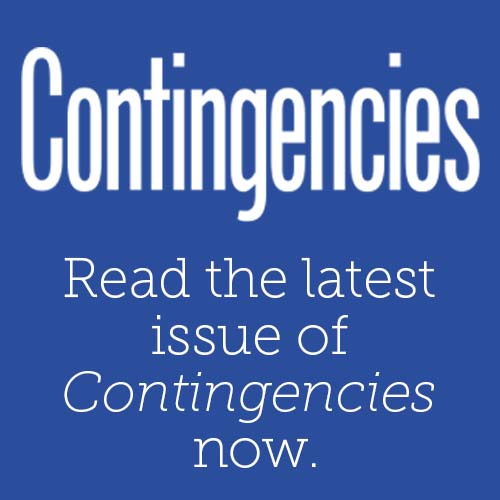Professionalism Counts, October 2020
Must, Should, May: When Do You Need to Disclose a Deviation From an ASOP?
The Actuarial Standards of Practice (ASOPs) provide binding guidance to actuaries and identify what you should consider, do, document, and disclose when rendering actuarial services. Most guidance in the ASOPs appears in the form “the actuary should do X” or “the actuary should consider doing Y.” Less often, you might come across “the actuary must do A” or “the actuary may do B.” Although these words—must, should, should consider, and may— occur frequently in ASOPs, the Actuarial Standards Board (ASB) is very careful to differentiate among them when they review ASOPs to ensure the guidance is appropriate.
If you are wondering what, exactly, the difference is between these words in terms of actuarial guidance, the answer lies in ASOP No. 1, Introductory Actuarial Standard of Practice. ASOP No. 1 defines terms that appear throughout the ASOPs. In most ASOPs, the defined terms apply only to that ASOP, but the terms defined in ASOP No. 1 apply to all ASOPs.
Indicating their importance, the terms of construction “must/should” and “may” are the very first terms defined in ASOP No. 1. According to ASOP No. 1, “must” means the ASB believes that an actuary is unlikely to have any reasonable alternative but to follow a particular course of action. Because the ASOPs are principles-based and allow for professional judgment and are typically not highly prescriptive, “must” is rarely used.
|
In contrast, “should” indicates the normally appropriate practice for a situation and is much more common. However, ASOP No. 1 recognizes that situations may arise where, in the actuary’s professional judgment, “complying with this practice would be inappropriate … or that under the circumstances it would not be reasonable or practical to follow the practice.” Deviating from the guidance given in a “must” or “should” statement, then, is permitted, but to remain in compliance with the ASOPs, you must disclose the nature of, rationale for, and effect of such a deviation, as required by ASOP No. 41, Actuarial Communications.
“Should consider” is another term that frequently appears in ASOPs. Sometimes it is followed by a course of action, as in “the actuary should consider preparing and retaining documentation.” The requirements for “should consider” followed by a course of action are not as strict as those for “must” and “should.” The ASOP states:
If, after consideration, in an actuary’s professional judgment an action is not appropriate, the action is not required and failure to take this action is not a deviation from the guidance in the standard.
In such cases, disclosure is not required.
The vast majority of guidance in the ASOPs is either a “should” or “should consider,” but occasionally “may” is used. According to ASOP No. 1, “may” means that the course of action described is one that would be considered reasonable and appropriate in many circumstances. “May” … is often used when providing examples (for example, factors the actuary may consider; methods that may be appropriate). It is not intended to indicate that a course of action is reasonable and appropriate in all circumstances, nor to imply that alternative courses of action are impermissible.
Therefore, you are permitted, but not required, to follow a course of action introduced by “may.” No disclosure is required if you don’t follow the course of action suggested by a “may.”
Several other important terms are defined or discussed in ASOP No. 1, including actuarial soundness, materiality, practical, professional judgment, reasonable, and significant. Again, unlike the definitions found in other ASOPs, these definitions and discussions hold across all ASOPs. (A handy resource is the ASB’s definition document, which contains the defined terms from every current ASOP. In appendixes, it also includes defined terms from exposure drafts and repealed ASOPs.)
We encourage you to read ASOP No. 1 at least once a year to refresh your understanding of these and other terms used throughout the ASOPs, as doing so will help you interpret the guidance in the ASOPs correctly.







